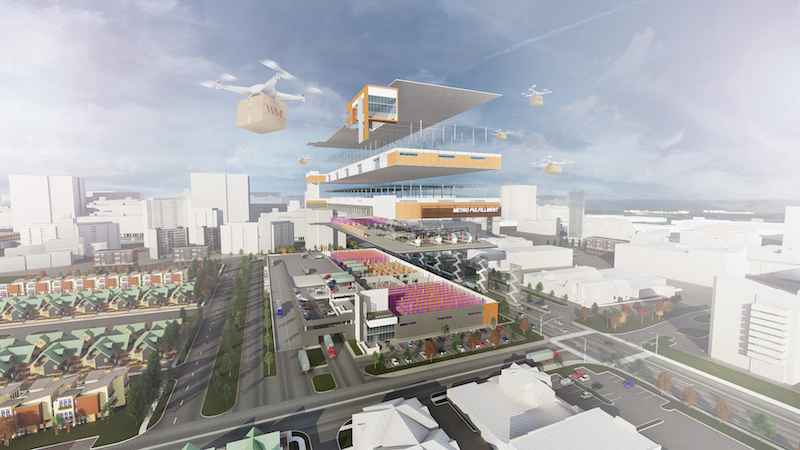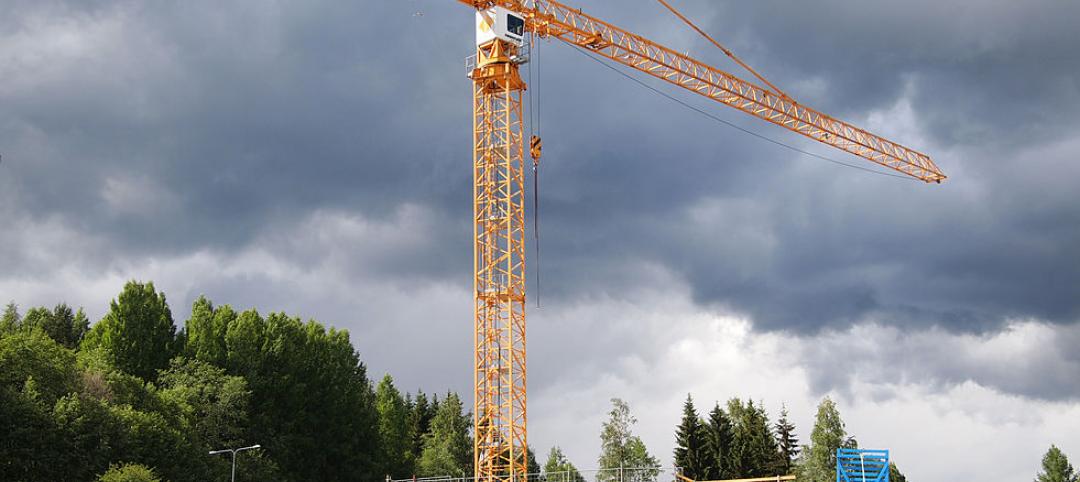The rise of e-commerce has uprooted the retail status quo and created logistical obstacles never before seen on such a large scale. Among the thorniest logistical issues that everyone from Amazon to Walmart is working to solve: last-mile delivery.
People have become accustomed to buying just about anything they need online with a few clicks. And thanks to services such as Amazon’s free two-day delivery and, in some cases, one-hour delivery, customers are used to expeditiously receiving their purchases. But in many urban areas, there just isn’t enough land to facilitate the industrial warehouse space necessary to satisfy last-mile delivery.
That is, unless the warehouses are built vertically. Ware Malcomb has created a multistory warehouse facility prototype that creates a “warehouse on top of a warehouse” to increase leasable space without sacrificing functionality. These multistory warehouses will be “fully functional, divisible, and leasable without compromising the typical tenant’s operational requirements,” says Jay Todisco, AIA, LEED AP, Executive Vice President with Ware Malcomb.
See Also: Fungus may be the key to colonizing mars
The prototype allows for full-sized, 53-foot-long tractor trailers to operate on two levels and provides parking space for hundreds of cars, all while increasing rentable space. It forgoes large, expensive circular ramps and instead opts for straight, two-way ramps to connect an upper and lower truck yard. Between the two truck yards is an employee parking deck that separates truck and auto circulation and creates a queuing area on a mezzanine level for last-mile delivery vehicles.
The building itself is
designed with an independent steel structure and non-load-bearing concrete wall panels. The steel structure and wall panels can be fabricated simultaneously and then erected sequentially to shorten construction time.
The size and the number of stories for a specific facility will reflect the location’s proximity to a port and the surrounding area’s density. The more dense an area is, the taller the building will need to be. In urban cores, for example, facilities will hover around 250,000 sf across two or three stories, with high-speed freight elevators to expedite the flow of goods. Buildings closer to a port will be larger, around 500,000 sf, but will require fewer stories.
In order to be successful, says Todisco, multistory warehouses must meet the end user’s functional requirements, be economical to build, and have the ability to be easily modified to varying site configurations.
Related Stories
| Jul 28, 2014
Reconstruction Sector Architecture Firms [2014 Giants 300 Report]
Stantec, HDR, and HOK top Building Design+Construction's 2014 ranking of the largest reconstruction architecture and architecture/engineering firms in the U.S.
| Jul 27, 2014
Maturing ‘plug and play’ sector could take market share from AEC Giants [2014 Giants 300 Report]
The growth of modular and containerized data center solutions may eventually hinder the growth of traditional data center construction services.
| Jul 27, 2014
Top Data Center Construction Firms [2014 Giants 300 Report]
Holder, Turner, and DPR head Building Design+Construction's 2014 ranking of the largest data center contractors and construction management firms in the U.S.
| Jul 27, 2014
Top Data Center Engineering Firms [2014 Giants 300 Report]
Fluor, Jacobs, and Syska Hennessy top Building Design+Construction's 2014 ranking of the largest data center engineering and engineering/architecture firms in the U.S.
| Jul 27, 2014
Top Data Center Architecture Firms [2014 Giants 300 Report]
Gensler, Corgan, and HDR head Building Design+Construction's 2014 ranking of the largest data center architecture and architecture/engineering firms in the U.S.
| Jul 23, 2014
Architecture Billings Index up nearly a point in June
AIA reported the June ABI score was 53.5, up from a mark of 52.6 in May.
| Jul 21, 2014
Economists ponder uneven recovery, weigh benefits of big infrastructure [2014 Giants 300 Report]
According to expert forecasters, multifamily projects, the Panama Canal expansion, and the petroleum industry’s “shale gale” could be saving graces for commercial AEC firms seeking growth opportunities in an economy that’s provided its share of recent disappointments.
| Jul 18, 2014
Contractors warm up to new technologies, invent new management schemes [2014 Giants 300 Report]
“UAV.” “LATISTA.” “CMST.” If BD+C Giants 300 contractors have anything to say about it, these new terms may someday be as well known as “BIM” or “LEED.” Here’s a sampling of what Giant GCs and CMs are doing by way of technological and managerial innovation.
| Jul 18, 2014
Top Construction Management Firms [2014 Giants 300 Report]
Jacobs, Barton Malow, Hill International top Building Design+Construction's 2014 ranking of the largest construction management and project management firms in the United States.
| Jul 18, 2014
Top Contractors [2014 Giants 300 Report]
Turner, Whiting-Turner, Skanska top Building Design+Construction's 2014 ranking of the largest contractors in the United States.













